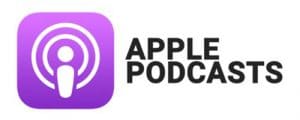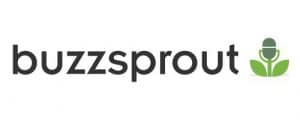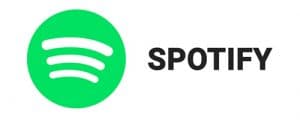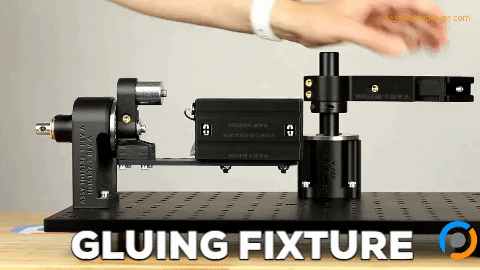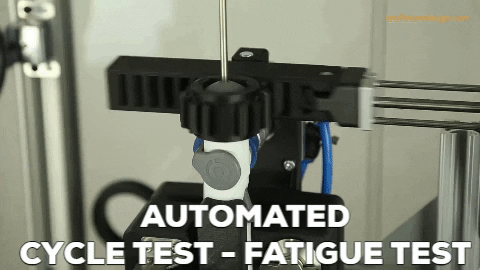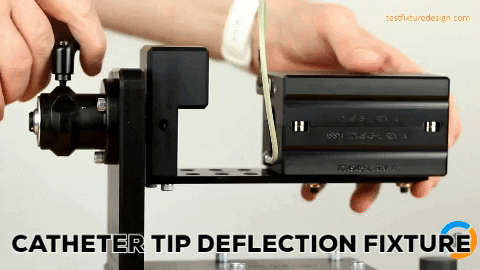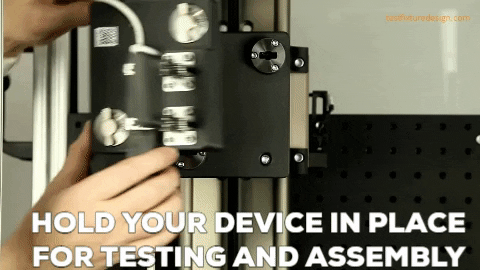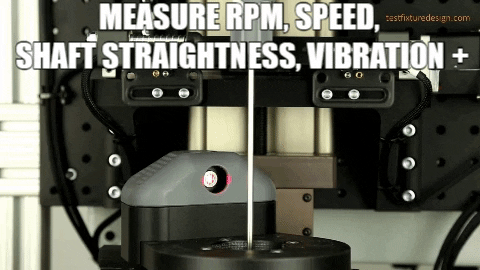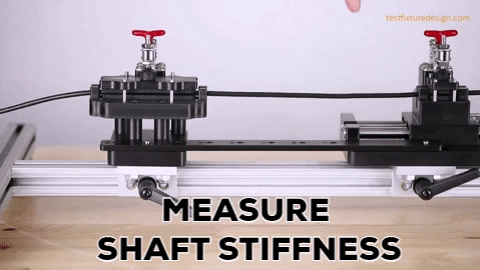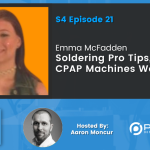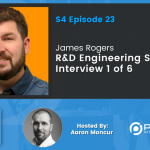Daniel Campbell | Model Based Definition (MBD), Digital Twins, and Industry 4.0

Who is Daniel Campbell?
Daniel Campbell is VP of Model-Based Definition at Capvidia. He has more than 20 years of experience in the field of digital metrology, software design, and model-based definition. He is also currently the Chair of the ANSI Working Group, and a member of the Board of Directors of the Dimensional Metrology Standards Consortium.
In this episode learn about Model Based Definition (MBD) and how large companies are using it to streamline workflows and increase efficiency in manufacturing and metrology.
EXPAND TO VIEW EPISODE TRANSCRIPTION
Presenter 00:00
Hi everyone, we’ve set up this being an engineer podcast as an industry knowledge repository, if you will, we hope it’ll be a tool where engineers can learn about and connect with other companies, technologies, people, resources and opportunities. So make some connections and enjoy the show
Daniel Campbell 00:18
that actually could be an edge for you and your company with your competitor or against your competitor. Because you know, your customer might be very happy that you’re able to deal with some of this model based definition data so.
Aaron Moncur 00:46
Hello, and welcome to the being an engineer podcast. We’re speaking today with Daniel Campbell, who is VP of model based definition at CAP Vidya. Daniel has more than 20 years of experience in the field of digital metrology, software design and model based definition. He is also currently the chair of the NCI working group and a member of the Board of Directors of the dimensional metrology standards Consortium. Daniel, welcome to the show.
Daniel Campbell 01:16
Thanks, Aaron. Thanks for having me here.
Aaron Moncur 01:18
All right. So you are an expert when it comes to MBD. Let’s let’s start there really basic. What is MBD? What is the acronym stand for? And like what what is it? Actually?
Daniel Campbell 01:30
Yeah, yeah, no, it’s a good question. It’s one of it’s one of the alphabet soup kind of topics that’s out there. So MBD, it stands for Model based definition. And the model that we’re talking about here is a CAD model, a 3d CAD model. And the idea is that when you’re planning a product, you plan to 3d shape. And then you add all kinds of annotations, all your Gd and T and all your tolerances and everything like that. All of that goes into your product design and your manufacturing plan. And the way that this is typically done now is people will use a like, you know, a 3d modeler like SolidWorks, or creo, or an X or Catia to define the shape. But usually a 2d drawing is created for all of these tolerances, and GD and T and all these other manufacturing metadata. The idea with MBD is to stop generating a 2d human readable document and put it all on the model. So that you have one single source of truth which has your shape definition and has all your manufacturing metadata, as well. And so, like the idea of what this enables, it allows just like how you could take that that SolidWorks model, maybe save it to step and load it into a tool like Master cam for machining. Now you can take a SolidWorks model with 3d annotations and MBD model. And you can export that with annotations into for example, a CMM software package. And you don’t need to be typing in you don’t need to take a 2d drawing that was printed from SolidWorks and then move it over to quality and start typing that back into the CMM. Software. Obviously, it’s it’s pretty silly. So. So it’s a big revolution that’s happening right now really in manufacturing.
Aaron Moncur 03:13
And it just makes so much sense, right? You’ve already created the geometry that there are a few things in drawings that you can’t pull directly from the model like material and surface finish and some tolerances, right, things like that. But by and large, you’ve already defined everything. So like you said, it feels so wasteful to go back and like spend hours creating a 2d drawing for a shape that you’ve already defined all the geometry.
Daniel Campbell 03:40
Yeah, no, it’s funny, actually. Because I mean, people are there. So everyone’s so used to doing it. But when we first start talking with our users about MBD, like we’ll usually kind of like pull everyone out of the situation and think like, okay, what are you doing, you’re defining the shape. You’re creating a drawing, you’re printing that to PDF, you’re taking the PDF over to over into manufacturing and quality. You’re having them read the PDF, and then type that data back into a different system. Like why are we doing this? This is insane, you know? But yeah, so it’s it’s good.
Aaron Moncur 04:10
Yeah. I wonder why that didn’t happen. Just when CAD became a thing, right? Like, maybe people were so steeped in the tradition of creating drawings, no one even thought about it, or maybe the technology wasn’t there to do it. I don’t know if you know anything about that. That has made it
Daniel Campbell 04:25
is it’s a it’s a it is an interesting question, actually, because a lot of the technology for applying 3d annotations has been in the CAD system since like the year 2000. But it was never largely adopted. And I think a lot of a lot of people have theories about this. My theory is that there was never a focus on machine readable annotations. The focus was always that the annotations, you know, they were readable to a human, but they weren’t written in some type of standard format such that downstream software can read it and automatically operate from it. And that’s really the ultimate benefit of MBD and That wasn’t quite there at the beginning. And so I think it was it hurt the uptake.
Aaron Moncur 05:04
So let me just make sure I understand this completely. You’re saying that with MBD model based definition, I can send out my 3d model without having to spend any time creating a 2d drawing effectively that the 2d drawing is eliminated doesn’t even exist anymore.
Daniel Campbell 05:23
That right? That’s often the case, it depends on the situation. So we do have customers that do not generate a drawing. They have all of their products, our 3d model based definition. And they they have no drawings that they generate. We also have a lot of customers that they use the 3d MBD as their primary product definition with the 3d annotations, but they also create a drawing, which is basically a derivative of, of the 3d model and annotations. And that’s just because there are a lot of people. Often it’s a lot of the suppliers to some of our customers that basically insist on drawings. I mean, they, they, they don’t want to deal with anything 3d, they just kind of want to deal with things the way it always was. And so yeah, that’s fine. You know, it’s, uh, but as long as it’s kind of a derivative piece of data, that is not the primary piece of data.
Aaron Moncur 06:14
Yeah, yeah, for a long time. And it’s still today, that’s still the current state of affairs, that drawing is your your contract really, with your manufacturer. And so you and other groups are trying to evolve that paradigm into one where the contract is now the the MBD model, not the 2d drawing, right? Yeah,
Daniel Campbell 06:38
that’s That’s exactly right. I mean, at some point, you know, there has to be sort of an official, you know, this really is if we go back to, you know, if we get into a legal battle, this is the definition of the product. And you’re right, it typically is the actual PDF drawing. And, yeah, so you know, with a lot of our a lot of our customers, it’s always kind of an interesting, you know, big business shifts actually like to make that and for them to start, consider the, the model as the primary. There is some precedent for this starting to happen, though, which is, especially in aerospace and defense. So a lot of contracts that come from the US Department of Defense, but also some other defense ministries from other countries. They’re putting out new contracts. And part of the contractual requirement for this is that the product definition has to be a 3d model. This definition, oh, interest should not be a drawing, it should be a 3d MBD. Yeah. And so that’s really like changing the market rapidly, because obviously, these are very big contracts with very big companies like Lockheed and Raytheon, and so forth. And so you know, if they want to play ball, they have to learn how to treat the model as the product definition.
Aaron Moncur 07:46
That’s great. I’ve heard this might be apocryphal. I don’t know. I’ve heard that Tesla. Is it fully MBD? They don’t they don’t do drawings anymore?
Daniel Campbell 07:55
Yeah, that’s right. Yeah, MBD. I mean, they started they started from like a, you know, sort of a bank, a blank slate. And so I think that was a really smart and obviously, you know, very forward looking company as well. So I think, yeah, it was very smart of them to just say, No, we’re going into the future here. We’re gonna use the latest technology.
Aaron Moncur 08:15
Yeah. So what are the biggest obstacles for a company to incorporate MBD into their workflow?
Daniel Campbell 08:23
Yeah, I think the biggest thing is, is simply that it’s a very big, it’s a very big transition. You know, I mean, if you think about how manufacturing works, so well, how it is that you’re able to have, you know, carry an iPhone in your pocket, which is this, you know, wonder of technology that you’re able to buy for, you know, under $1,000, and put it in your pocket and buy a new one every few years, the only reason that’s able to happen is because of how efficient manufacturing is. There’s no way that that otherwise that that will be able to happen. And what that means is a very repeatable process, you know, the business process is extremely refined, you don’t change things unless they’re absolutely broken. And so now you have this idea of MBD, you know, hey, let’s throw out the drawing. And instead, we’re going to change our entire workflow. So we’re working from a model based definition. So that’s, that’s the thing that’s tough. I mean, it is it’s requesting a big change just in how business is done. But it’s I mean, the funny thing is, it’s kind of a, it’s kind of a tricky area, because you know, every major company you talk to, they understand that MBD is absolutely inevitable. It’s coming. They’re going to have to figure out how to do how to how to how to use it effectively, and how to implement it in their workflows. Otherwise, they’ll lose their competitive edge because they know their competitors will do it. But on the other hand, they don’t want to, you know, they don’t want to break what isn’t broken. Yeah. And so that’s kind of you know, where we are right now. So it’s an interesting period.
Aaron Moncur 09:54
It seems very similar to the whole Evie revolution, right? Like all the manufacturer the automat The factories knew that EVs were coming, but no one really wanted to jump in. And then here’s Tesla. Going back to Tesla. I’m not a Tesla fanboy, by the way, they’re cool cars, but whatever. Anyway, Tesla jumps in and like they had this wild success. And now everyone is getting jumping on that Evie bandwagon. So because it just takes a few big companies to get the ball rolling to get that started, and then hopefully everyone else jumps in. Yeah, that’s
Daniel Campbell 10:24
true. Actually, it is a very good parallel, because I mean, you know, when people you know, when an outsider, you see a Tesla versus a, you know, an old, an old muscle car or something, you think, yeah, I mean, it’s got four wheels, it’s a car, it’s same thing. It’s an entirely separate device, you know, it’s a totally different type of product. Yeah. And, you know, for Ford to retool and start making EVs instead of, you know, traditional drive train cars. I mean, it’s, you know, it’s, it’s a huge change. Yeah. But they’ll figure it out.
Aaron Moncur 10:51
Let’s talk about some of the practical applications. I mean, manufacturing, we’ve already kind of talked about that a little bit. But But MBD goes beyond just manufacturing. How else is it used in the industry?
Daniel Campbell 11:03
Yeah. So I think that the biggest practical applications is really on the on the quality side. I mean, that’s, that’s especially where a lot of this stuff is applicable. And the reason is, is I mean, if you think, you know, what do I see on a drawing, you pull up a drawing, what do you see, it’s mostly quality criteria, Gd and T and dimensions and tolerances and things like this. You know, like you’re saying, surface finishes, I mean, that’s that the end of the day, that’s a, that’s a quality criteria, you know, this is how bad it’s allowed to be. And you need to measure it and make sure that it’s it’s badness is within that range. So that’s like, where, you know, that’s where a lot of this this data is, is consumed. And so a lot of the usage of model based definition is in the generation of the quality plan, in the sense of coming up with a quality plan that will sufficiently sample all of your batches of parts and things like that, and do some statistical analysis on it to make sure that you have a process that’s under control and generating good parts and stuff like that. But while at the same time making it as cheap and as simple a quality process as possible. So there’s a lot of planning like high level quality planning like that. But then it also goes down even to like the CMM the coordinate measuring machine domain, or 3d scanning, which is a big thing now, where you’re doing, you know, dimensional metrology gathering point clouds and evaluating point clouds against the tolerances that are listed there on the on the 3d MBD model. So that’s kind of the biggest, the certainly the biggest sort of practical application for MBD right now.
Aaron Moncur 12:42
Okay. Here at pipeline, we do a lessons learned review each week, we have a weekly team meeting. And one of the little presentations each week is a lessons learned review. And so one of the engineers on the team is assigned to go out and find some lesson that was learned that can be shared with the rest of the team. And this week, one of our project leads was in charge of making that presentation. And he shared an experience he had had maybe a year or two ago where he ordered some parts for Project machined parts. And they came in and took a quick look at them, you know, cursory glance, Yep, looks like everything’s good. Put them on the shelf. And a couple of weeks later, when all the other parts got in, went to start building this assembly. Well, now he starts actually putting it together and realizes Oh, shoot, the counter sinks are all missing from the other side of this plate, and I can’t use it. And at that point, you know, it was couple of weeks later, we didn’t have time to send it back to the machine shop. So we ended up just getting a countersink bit and doing it ourselves, which is kind of messy. And it requires time that we should be spent doing other things, right. So his lesson learned was, make sure you you really inspect these parts before just putting them on the shelf and waiting, waiting, which in theory is is wonderful, right? But if you start thinking about the overhead required to do that, especially if you’re doing that on all your parts. So you have 50 or 100 parts in this assembly. And for a person to like inspect all these parts, arguably, that’s not a good use of time. Especially, you know, you’re looking at this thing with human eyes. And how do I know if a hole is off by 30 thousandths of an inch? Right? I won’t know. So I might look at it and think Yeah, looks fine. But it’s not until I start putting it together that I really know. There is a problem. So all this is leading up to an actual question I have. Is there a future and I think maybe to some degree, that future is already here. But as I was thinking about this, I was I was thinking to myself that it would be so cool, so great if we just had this little scanner, right? And all we do is put a part in the scanner, push a button, it scans everything and automatically pairs it with its digital twin, which we’ll talk a little bit more about later on. But it pairs it with us This digital twin twin, which has all the MVD information and says, yep, this part is good, or Nope, this part is bad. And here’s why does that process does that technology already exist?
Daniel Campbell 15:12
Actually, it’s quite close to being something there. There like are a couple of very small nuances to, to what you’re saying. I mean, like, especially something like maybe how that part is going to be fixtured within the envelope of this measuring device or whatever. But aside from little nuances like that, yes, like that does that does exist and, and a lot of companies are starting to use it. I mean, it’s, it’s one of these things, that it’s a lot of newer engineers that are started to get into this. But you have devices that can capture very dense sampling patterns, very dense point clouds, on parts, maybe they’ll spin the part around and kind of capture it from 360 degrees. And with that information, you can do your analysis and compare it to the GD and T that’s on that’s already embedded in the part. And you can get a very quick, you know, upper down as far as whether that whether all those things are within tolerance. And actually, there’s even more information that you get, like, if you imagine like maybe that’s a casting that you have. And you might have a profile tolerance on some, you know, curved surface or something like that. After you get that scan, you can look at it, you can see a color map that will tell you, hey, yeah, it is out, like, Okay, where’s it out? Well, there’s a pocket over here, where it really seems to be out, it’s okay, we need to go back to that mold and fix the mold at this at this specific location, you know, so like, there are even other benefits aside from that. But yeah, automated inspection. I mean, that’s, that’s a big thing that people want to get to. Because I mean, again, if you think about, you know, what’s happening, you have the engineer on the one side, thinking about the design intents of the part. So they’ll put some tolerances on it, and then it goes to a PDF. And then the quality engineer types that in and, you know, whatever. I mean, that design intent is programmed into the part at that point when the designers applying it, you know, now we’re getting to the point where there’s this downstream software should just be able to directly read what that design intent that the engineer put on, and do the validation accordingly. So yeah, so it’s a complicated journey. But yes, it is definitely headed in that way. Yeah.
Aaron Moncur 17:14
That’s amazing. I can’t wait till we get there. I mean, you know, doesn’t make sense to pay an engineer to spend hours and hours inspecting parts like that. But if you could pair an intern with technology, and it takes, you know, half an hour or something that’s that’s a no brainer. Absolutely. All right. Well, what’s Well, one of the the big benefits that is seems very clear to me of MBD is just the time that you save not creating 2d drawings. Are there other maybe more nuanced benefits to it to MBD?
Daniel Campbell 17:48
Yeah, yeah. Actually a big one. And this is one that a lot of a lot of large, very large companies, large manufacturers are pursuing. That’s mostly who we deal with, is the idea of adding repeatability or uniformity to their, to their business process to their manufacturing process. And so what I mean by that is just that, you know, again, you have this drawing, it’s a PDF, and you have, you know, 20 different quality engineers who might be tasked with that specific measurement, let’s say we’re talking about a measurement. Depending on who it is, they might have different skill levels, they might have different interpretations of Gd and T, some of them might be mistaken about one thing or another, one person maybe didn’t get such great sleep last night, you know, et cetera. And so the outcome, if you hand that same drawing to 20 different people, you might get total 20 different results back as far as the product that actually gets created. When you have a software based process, I mean, it’s a deterministic workflow, you know, yeah, put in an input and you get the same exact output every time. And so whether we’re talking about you know, high level quality planning or you know, the weld welding, which is another area that is in, you know, is in scope for MBD, you know, CMM programming, stuff like that, you know, you insert a digital data set, it’s interpreted by software the exact same way every time and you get the same exact output. So repeatability. I mean, again, we talked earlier about repeatability being a big thing for manufacturing. And so, so I think that’s probably one of the bigger, one of the big benefits of model based definition.
Aaron Moncur 19:27
Wonderful. All right. I’m going to take a very short break here, share with the listeners that Team pipeline.us is where you can learn more about how we help medical device and other product engineering or manufacturing teams develop turnkey equipment, custom fixtures and automated machines to characterize, inspect, assemble, manufacture and perform verification testing on your devices. We’re speaking with Daniel Campbell today VP of MBD at CAP Vidya. Daniel, what’s the workflow like for MBD. So let’s say I’ve created my my 3d model SolidWorks or creo, or whatever. Now what what what happens next?
Daniel Campbell 20:09
Yeah, so the biggest, I guess the biggest sort of fork in the road versus a drawing is that normally you generate the shape in your CAD tool. And then you generate your drawing, you’d add some projection views to the drawing and the natural annotations to that drawing. So instead of doing that, now, what’s going to happen is, you’re going to add those annotations directly to the 3d model, you don’t need to draw anymore, those get added directly to the 3d model. And each of the annotations that are there will reference the surfaces that are meant to control. So you add those surface references. And then from there, you could take that, that that digital data and pass it down to you know, whatever downstream tools might exist in manufacturing, in welding, in quality in assembly. And then, I mean, in general, the two major use cases would be a human consuming that data. So, which is similar to a drawing except it’s a little bit more user friendly, in the sense, you could rotate it, you could see the 3d shape, you could see exactly how the annotations control each different surfaces. So the human consumption of that data is sort of one general area. But the big game changer is the machine consumption that that data is consumed directly into a software tool to do some automated process.
Aaron Moncur 21:32
And where is that? Where are those annotations added to that? Like, if I’m using SolidWorks? Is it in SolidWorks? Or is there a different program that does that?
Daniel Campbell 21:41
It would be in your CAD tool. And depending on which CAD tool you use, sometimes you will need either a higher level of the CAT tool or maybe a certain module to the CAT tool. That’s something that you know, everyone should contact their their CAD reseller about that and ask about how to enable model based definition or 3d annotations to start looking into that. But you do the authoring right there in the MVD. And so that way, actually, when you’re when you’re using Product Lifecycle Management, that model with the 3d annotations gets checked into your PLM system or your PDM system. And it’s all controlled there with the model.
Aaron Moncur 22:20
Got it? Okay. And I think they’re their plugins, right? At least cat video makes some plugins for like, SolidWorks. And how do those work?
Daniel Campbell 22:29
Yeah, so typically, once you’re, you know, when you’re going from one CAD system to the next, or one CAD system to something downstream, like right now, if you think about a cam workflow, you want to take a SolidWorks or Catia model and put it into to master cam or something like that. Usually, what you’ll do is you’ll export a step model, or maybe an IHS model, and then you take that model to to the downstream software. The reason is you use neutral standard CAD formats to transmit this CAD data from one software tool to another. It’s the idea of interoperability between proprietary CAD systems. It’s the same idea for model based definition. There are some neutral ISO standard CAD formats, like so we use a lot of Qi F, which is a relatively new standard, it’s seven or eight years old. And then step a p 242, which is an MBD version of step will use those. Those get exported from your proprietary Creo or Catia or SolidWorks file, and then you have that neutral standard so that any software downstream can read that tool. And so that’s a large part of what our plugins do is we’ll publish that data from from the native CAD system into neutral standard formats. And then our software platform, MBD Vidya will be able to read these neutral files and do some quality planning to ballooning and things like this.
Aaron Moncur 23:55
Got it? Okay, so some of these CAD systems SolidWorks, creo, CATIA, whatever, might not have these these software agnostic neutral file formats available as an export option, and if not, that’s where one of these plugins comes in.
Daniel Campbell 24:15
Yeah, that’s right. Yeah. Yep. Yeah, we’re kind of experts, especially in the area of neutral neutral data standards and, you know, CAD data interoperability and things like that.
Aaron Moncur 24:24
Got it. Okay, cool. There’s some some terms that one encounters when reading about MBD, including digital thread, digital twin and industry. 4.0. Can you talk a little bit about each of those terms? What are they mean?
Daniel Campbell 24:42
Yeah. So they do they do get they they do get thrown around a lot. And actually, I think to the point that, you know, I know a lot of engineers that will sort of roll their eyes when they see somebody talking about you know, digital threat or something. But that’s just I think, because the terms are abused, but they like they do encapsulate a valid concept. So the idea of digital thread is just that you want to maintain some type of digital traceability from your product definition, which is your CAD model, all the way down through manufacturing through quality, etc. And so imagine this workflow, you have your CAD model, let’s say it’s a Creo model with 3d annotations on it, that’s your product definition, there’s your digital product definition, you’ll generate a QI F file from that go into a CMM, workflow measure 20 parts. Now you have 20 days digital representations of as built parts, maybe they’re serialized parts. And so now you have between your product definition, like the ideal definition of what your product is, and then you have it as built characterization of that model because of the detailed measurement you’ve taken. So now you’ve extended that digital thread from the design all the way to the as built state. And actually, from there, it gets into this next term, this digital twin idea, which is just I have my real part here, serial number 123, I’m holding in my hand. And then I have a complete digital representation of this in the form of my CAD model, and my as built measured data. So that’s the digital twin concept. Which is a powerful concept, obviously, in terms of the analytics you could do on a on a digitally digital representation of your part. And then industry 4.0, it encompasses some of these ideas. And it also encompasses a lot of other sort of future thinking ideas, like augmented reality and big data analytics and things like that. And just using all of these ideas within the context of manufacturing. And so yeah, having a digital thread, you know, this Yeah, this digital thread of dealing digitally with with your product definition and your SPL state helps to enable all of these industry for final ideas.
Aaron Moncur 26:56
Got it. Okay, so digital twin and industry 4.0. Those Those were terms I’d at least heard before, was somewhat familiar with digital thread was a new one for me. Sounds like that’s largely just traceability.
Daniel Campbell 27:08
Yeah, I think that’s right. I mean, that’s basically what it is is traceability, you know, throughout your entire manufacturing process.
Aaron Moncur 27:14
Got it? Okay, cool. At what point does it make sense for an engineering team to consider adopting MBD? Are there specific triggers that that we should look out for as an engineering team, or different factors are clues that should tell us that it’s time to start exploring making this change?
Daniel Campbell 27:35
Yeah, yeah, I think usually, what we’ll recommend to people is that they’ll jump into getting into, like pilots, especially with NPIs, like new with new product introductions, that’s usually a good place. Like you don’t want to just sort of take an existing product that’s already defined on a drawing, you know, you had a new product. Okay, you know, draw a line right here and say, we’re going to make this a 3d MBD. And do some pilots with it and test the downstream consumption case, you know, generate that 3d MBD dataset, and work with downstream manufacturing and quality and talk about what are the consumption use cases? And how can we derive value from this, you know, because there is some pain, obviously, it’s switching the way you’re doing it. So make sure that you get some value out of it as well. And once you start to kind of establish that value, people catch on to it. And they realize like, yes, it is a change. But, you know, there are all these benefits, and people start to figure out a little bit about the new tools, you know, a little bit of a learning curve. But I think it’s really like these pilots, I think that are the the sort of the fire that usually the spark that will start the wildfire, usually. And it’s through those pilots, you can usually figure out if you’re a good fit for a model based definition or not. Okay.
Aaron Moncur 28:48
Now, most companies I know aren’t using model based definition yet. So it’s not ubiquitous yet in the industry. What what is adoption look like right now? I mean, are you seeing it accelerating? Or is it still little, like kind of a steady, slow pace, which we expect in the next five years?
Daniel Campbell 29:10
Yeah, it’s picking up very, very rapidly right now. And it’s being picked up, especially at like the top top tier OEM manufacturers like very, very large companies, and they are slowly starting to drive it down their supply chain, like usually they’ll, and that’s really, the large majority of our customers are like, you know, fortune 100 manufacturers. Because that’s just where that’s where they’re, they’re especially interested in taking on this technology. They’ll do some internal implementations usually first, and then they get into pushing it down their supply chain. And and so right now, I think it’s already starting to be you know, more and more common every day that you have manufacturers of all different sizes. Maybe starting to see some data from some of their Are some of their customers? And they’re wondering like, Oh, what am I supposed to do about this? You know, but people like, the large companies are jumping on it very, very fast. And I would expect that in the next five years, it’ll start to become a lot, a lot more common. Cool. Which by the way, is not to say the drawings are going away. I don’t think they are. I mean, you you have certain platforms like the b 52, which was developed in the 1950s. And that’s still here. And it’s going to be you know, it’s going to be the same story. I mean, with they’re going to be drawing based products that are gonna be around for another 100 years, at least. Yeah. And so that’s something that’s it’s here to stay to a certain extent. But, you know, we’ll start to see much more of a shift towards the majority of products being MBD. Yeah, that makes
Aaron Moncur 30:44
sense. Let’s see. Maybe just one more question. And then we’ll, we’ll wrap it up here. What, what the the adoption of MBD, making those changes internally is, I guess one of the biggest obstacles in actually starting to use it what what are some of those operational or infrastructure changes that need to happen in order for a team to implement MBD?
Daniel Campbell 31:11
Yeah, I think one of the things is that a lot of the technology is still early, let’s say. So that’s a lot of the technology on the authoring side. But also on the consumption side. You know, since like, as you can imagine, since there aren’t a lot of companies using MBD. Now, a lot of the software consumption of the MBD data is not perfect. There might be a lot of things that are not supported and things like that. And so that, you know, it’s it’s a it’s a journey for a lot of these downstream software implementers. And so that obviously is sort of, you know, slowing things down a little bit, or it makes it challenging for people that are implementing. The other challenge is just learning new tools. I mean, it’s a different way of doing things and the way things were done. And so if you have someone who’s been, you know, who’s an artisan machinist, and that person has been working with drawings for four years, they’re going to be more comfortable working with drawings, and they’re probably not going to be terribly interested in moving away from drawings and adopting a different approach. And so, actually, it’s interesting, but a lot of sort of, you know, turnover in the workforce to younger, you know, university graduates or whatever that have that that, you know, grew up using SolidWorks. That’s actually one thing where, you know, we’re starting to see MBD really be taken up in a much easier way. Because there’s kind of more comfortable software tools in general. Yeah. So
Aaron Moncur 32:40
forth. Right. So cool. Okay. Well, anything else that that we haven’t covered that you think would be interesting or relevant to people listening to this, you know, considering MBD, how to use it? Etc?
Daniel Campbell 32:55
Yeah, no, I think I think it’s just, you know, a lot of people don’t think about it. But I think it’s an interesting thing that, you know, people can look into, you know, whether, whether it’s something that you’re planning on doing for your own designs or not, I think that like, you know, like I said, it is kind of an inevitable thing that’s happening. And so, you know, just to get educated on a little bit and kind of gain some experience is probably a good idea, especially if you’re a like, if you’re a contract manufacturer out there, to learn a little bit about model based definition and have a little bit of an idea of, you know, what it is what you can do with it, how you should not have to be scared of it and actually be able to make use of it and derive some value from it. That actually could be an edge for you and your company with your competitor, or against your competitor. Because you know, your customer might be, you know, very happy that you’re able to deal with some of this model based definition data. So, yeah, so as I said, check it out.
Aaron Moncur 33:53
Great. And are there any resources in particular that you recommend to learn more about? It? Could be your website as well. But anything out there in particular that that yeah, really helpful?
Daniel Campbell 34:03
Well, yeah, we do. We have a lot of good stuff on our on our website. A lot of we have a pretty active blog there that has a lot of interesting resources about model based definition. I know that there are a lot of YouTube videos out there in terms of training on how to use some of the cad tools and how to author model based definition. And so and I think the best thing you can do is just get dirty, get your hands dirty, you know, get out there and start putting some MBD on some parts and and see how some of the tools that you have will support model based definition.
Aaron Moncur 34:32
Love it. Love it. All right, Daniel, thank you so much for being on the show today. How can people get in touch with you?
Daniel Campbell 34:40
Yeah, I would just kind of check out our website. It’s cat video.com ca P vi dia.com. Like I said, we have a cool blog section and just you know, get in contact with us there. And, you know, we’d be happy to talk to you and learn more about what you’re doing and see how we could help you out.
Aaron Moncur 34:57
Terrific. Awesome. All right. Well, Daniel, thank you. So much again, I sure appreciate you being on the show and sharing all this wisdom with us.
Daniel Campbell 35:04
Thanks for having me. It’s been fun.
Aaron Moncur 35:09
I’m Aaron Moncur, founder of pipeline design and engineering. If you liked what you heard today, please share the episode. To learn how your team can leverage our team’s expertise developing turnkey equipment, custom fixtures and automated machines and with product design, visit us at Teampipeline.us. Thanks for listening
About Being An Engineer
The Being An Engineer podcast is a repository for industry knowledge and a tool through which engineers learn about and connect with relevant companies, technologies, people resources, and opportunities. We feature successful mechanical engineers and interview engineers who are passionate about their work and who made a great impact on the engineering community.
The Being An Engineer podcast is brought to you by Pipeline Design & Engineering. Pipeline partners with medical & other device engineering teams who need turnkey equipment such as cycle test machines, custom test fixtures, automation equipment, assembly jigs, inspection stations and more. You can find us on the web at www.teampipeline.us

